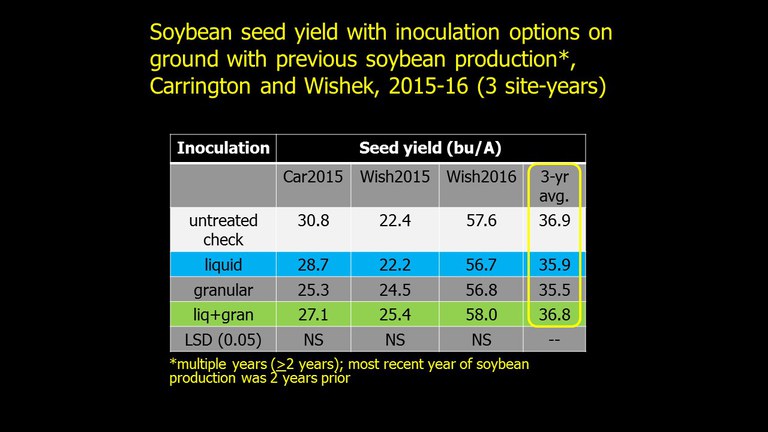Soybean Seed Inoculation Strategies with Prior Production History
Soybean seed needs to be inoculated with Bradyrhizobium japonicum bacteria to allow plants to produce most of the nitrogen required for seed production on fields with no prior soybean production. Also, if greater than three years are between soybean crops, seed inoculation is recommended.
After at least one year of soybean production in a field that included plants having effective nodulation, will continued seed inoculation increase yield? Averaged over 11 NDSU trials on ground with previously grown soybean, yield increased by 0.5% with inoculated seed compared to non-inoculated seed.
A common strategy is to ‘double’ inoculate soybean seed on new ground – use of two inoculate formulations, typically liquid and granular, at one half to full labeled rates of each. If a farmer chooses to use inoculant for a field with prior soybean history, should the seed be double inoculated? The results of three site-years of research conducted at Carrington and Wishek during 2015-16 are shown in the following figure. Averaged across trials, the data indicates no advantage with single or double inoculation compared to the untreated check.

In eastern Manitoba, 25 replicated on-farm trials were conducted during 2013-15 comparing double vs. single seed inoculation in soybean fields that had at least two previous soybean crops. Overall, a significant and economic yield response to double inoculation occurred in 2 out of 25 trials or 8% of the time. The Manitoba Pulse and Soybean Growers Association has the following checklist to help farmers to determine if single inoculation is an economic strategy for fields having prior soybean production. Note all four factors must be met to single inoculate soybean seed.
- Field has had at least two previous soybean crops
- Previous soybean crops had plants with well-nodulated root systems
- Most recent soybean crop within the past four years
- No significant field flooding or drought
Greg Endres
Gregory.Endres@ndsu.edu
Area Extension Agronomy Specialist


